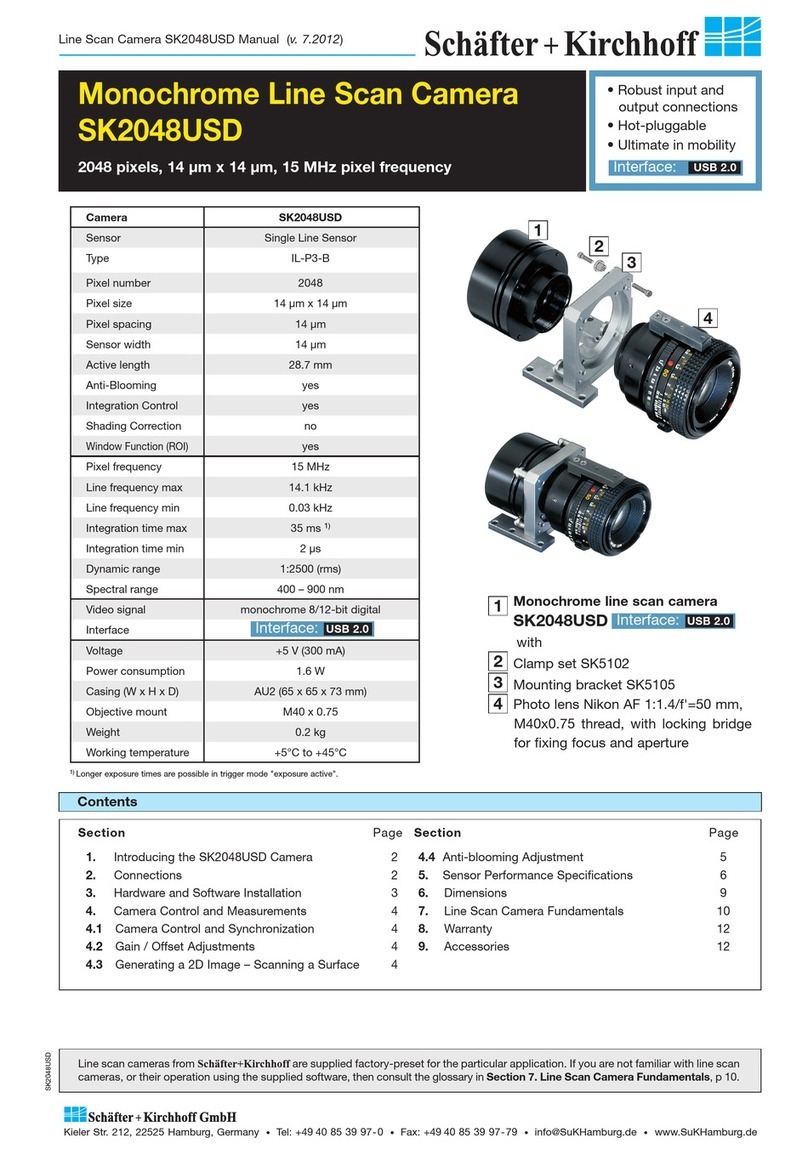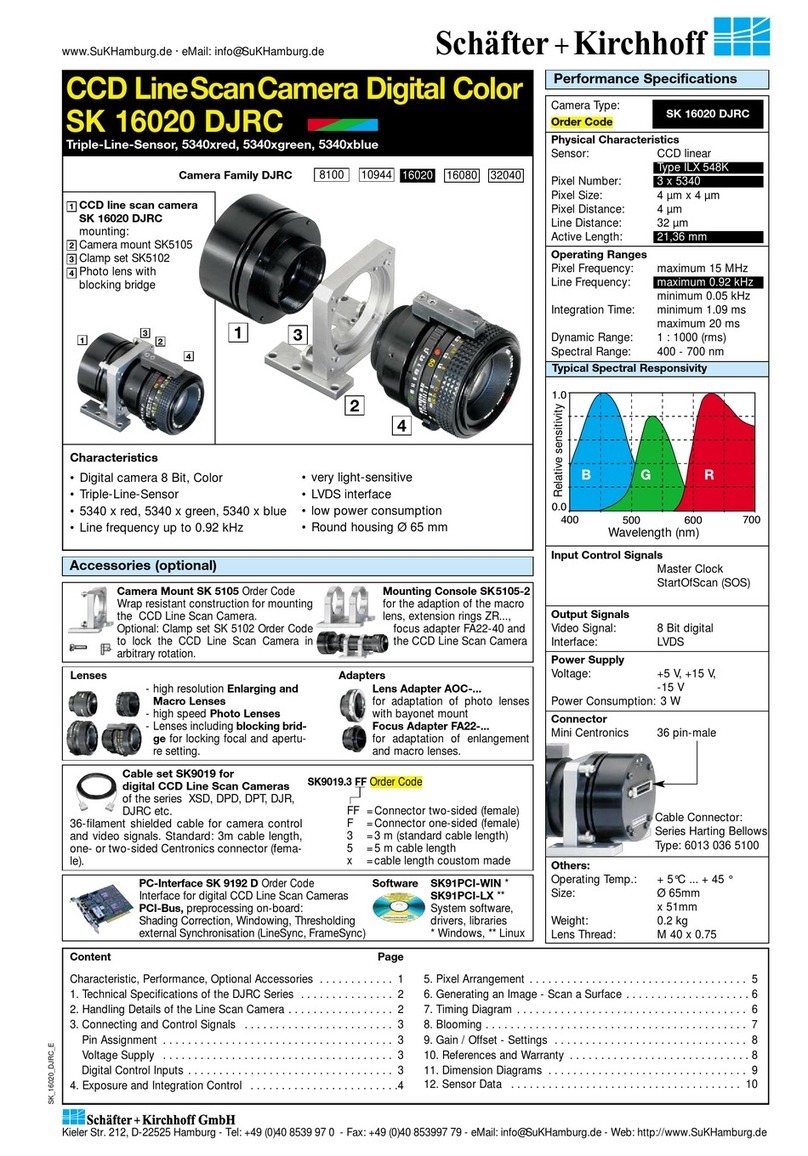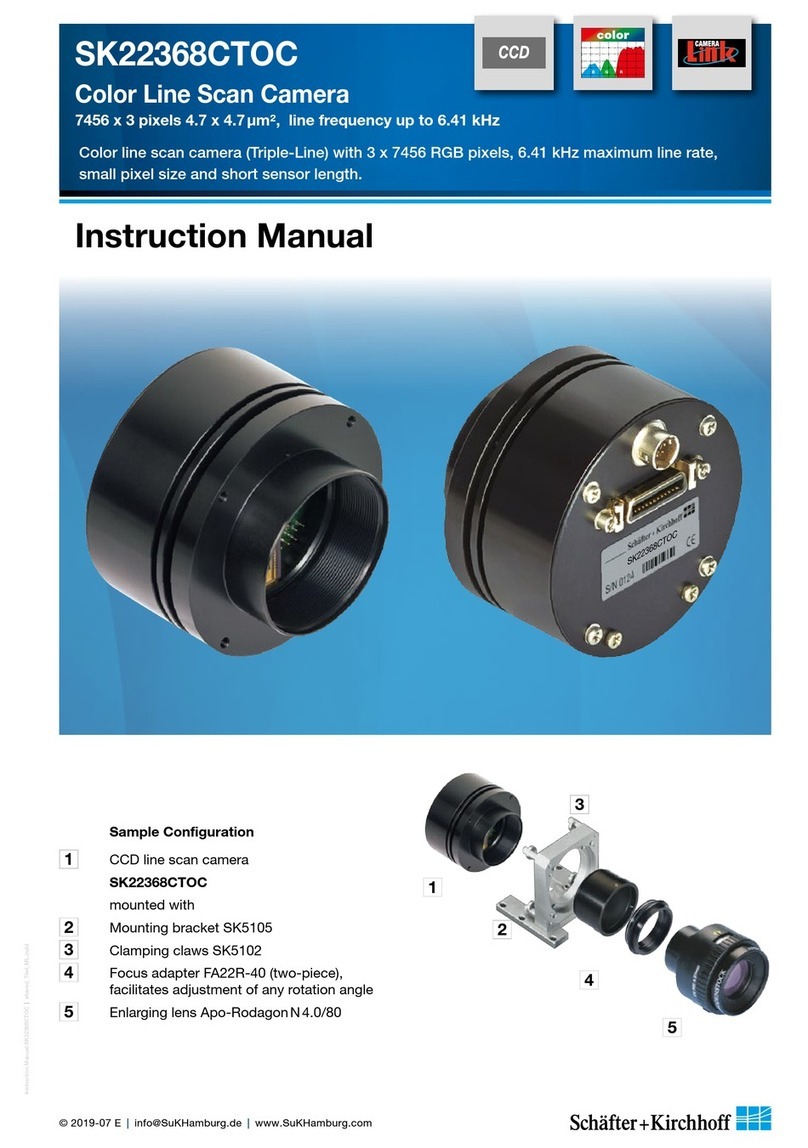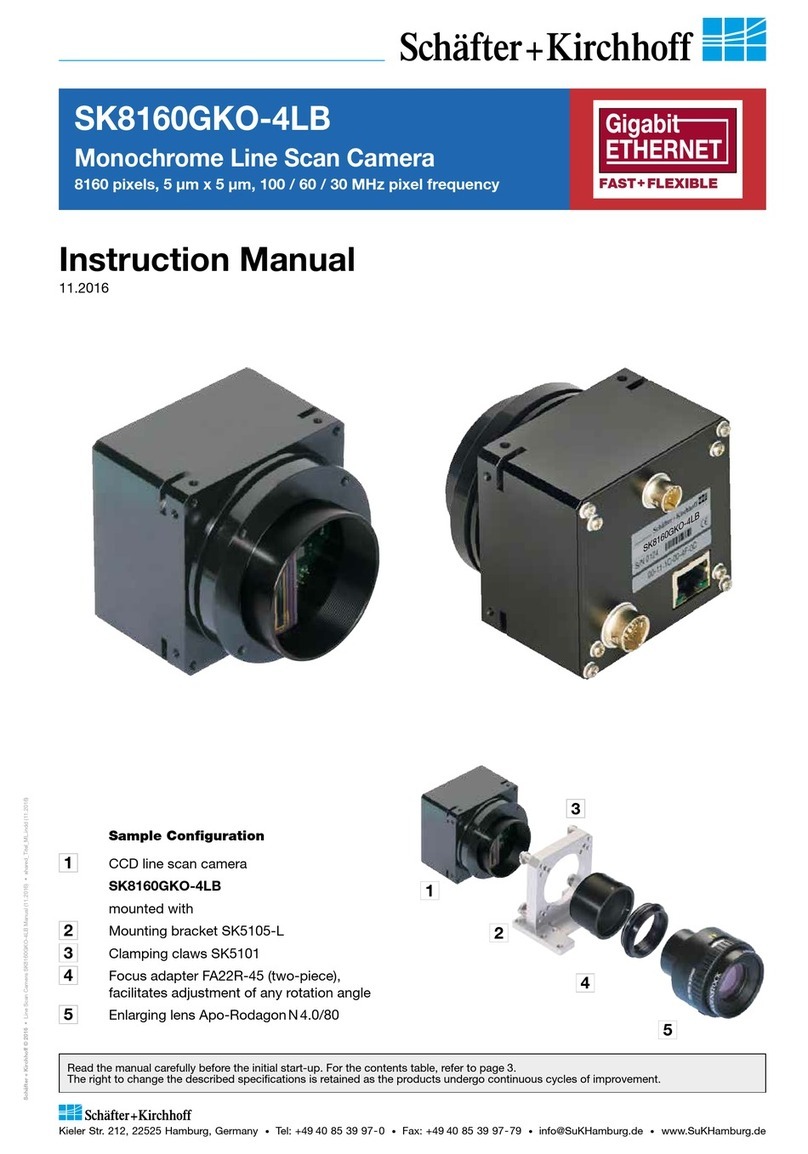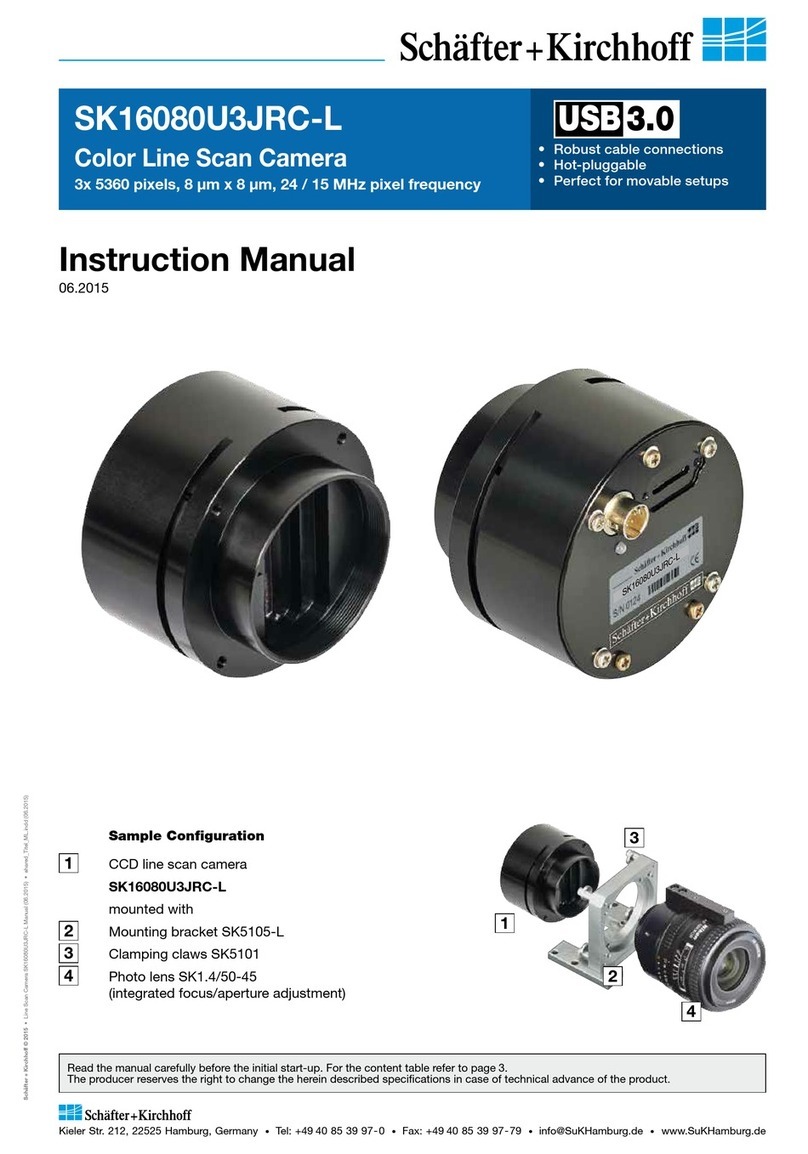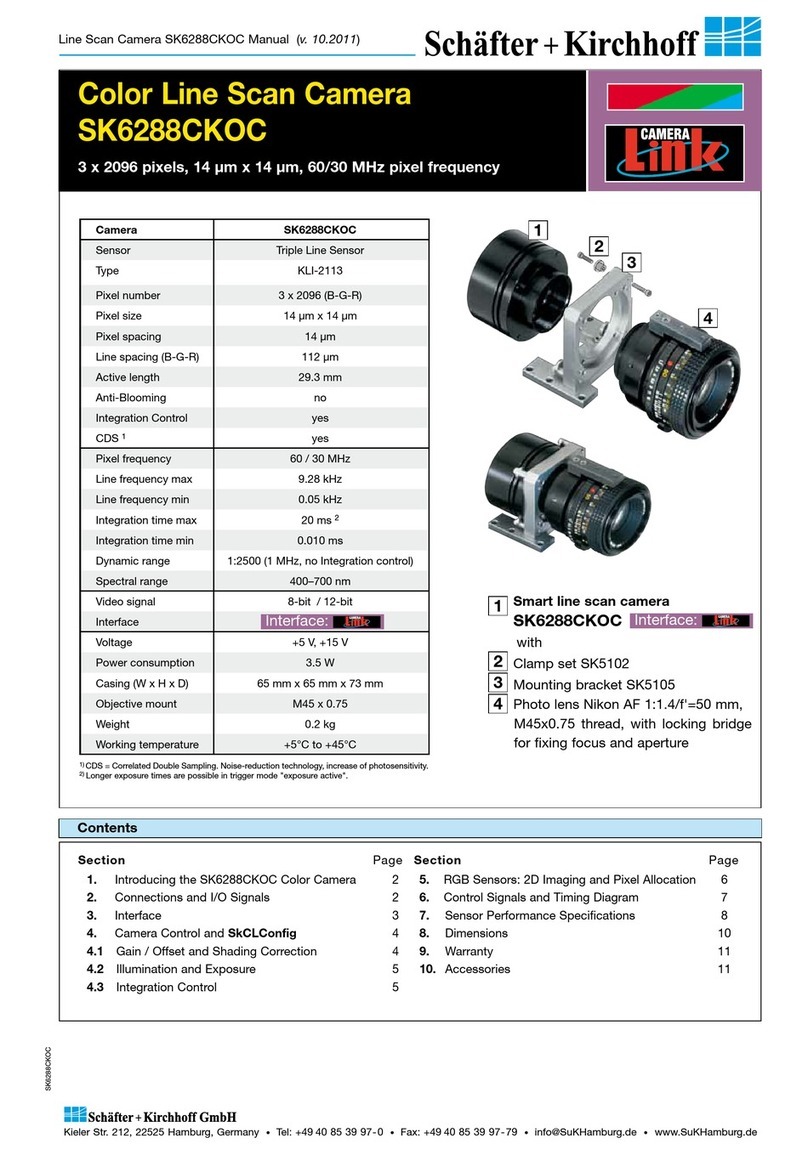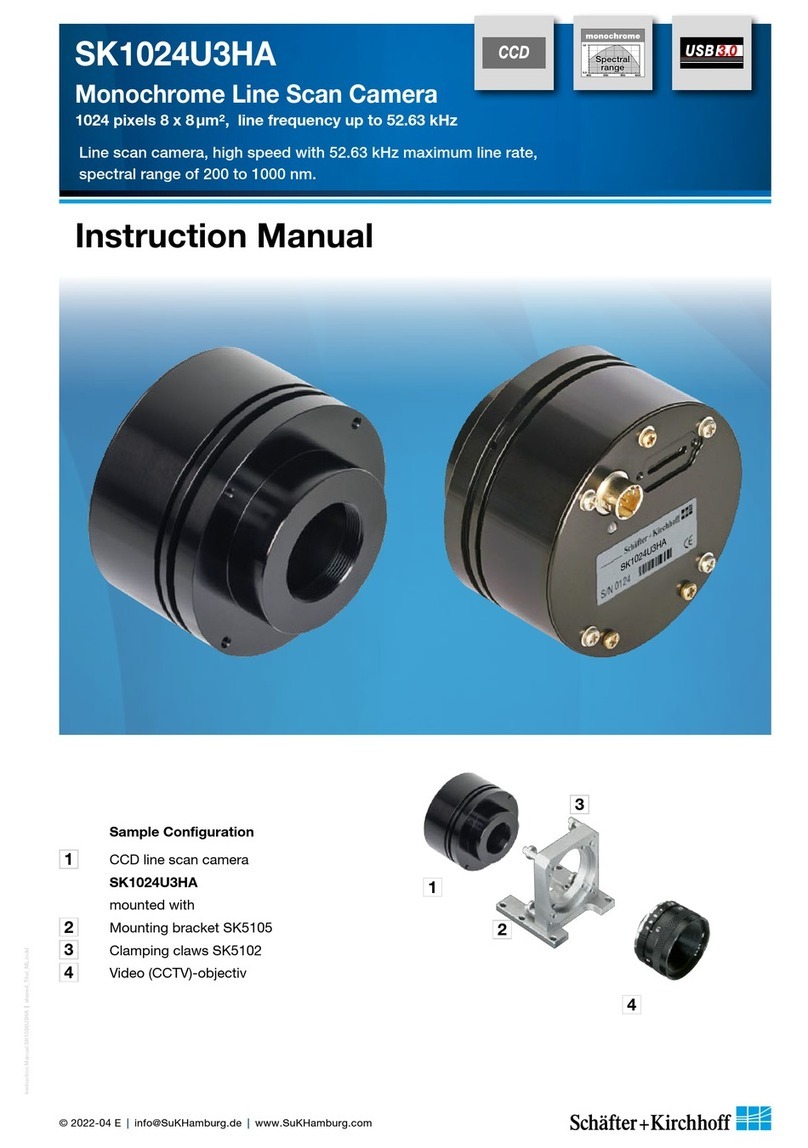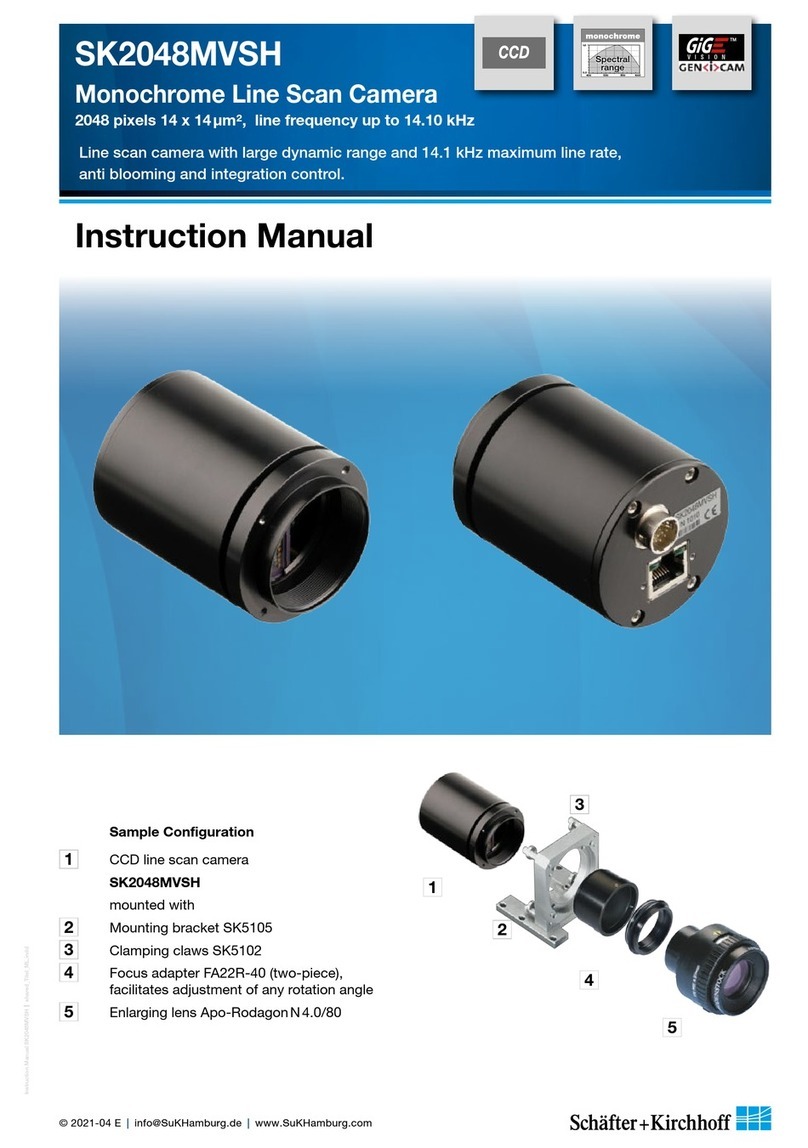
Line Scan Camera SK6288U3KOC Manual (02.2016) • shared_Contens.indd (02.2016)
3
SK6288U3KOC Instruction Manual (02.2016)
© 2016
Schäfter + Kirchhoff GmbH • Hamburg
How to Use this Instruction Manual................................................................................. 2
Safety Warnings .............................................................................................................. 2
Contents ......................................................................................................................... 3
1 Introduction ................................................................................................................ 4
1.1 Intended Purpose and Overview................................................................................................ 4
1.2 System Setup at a Glance ......................................................................................................... 4
1.3 Computer System Requirements............................................................................................... 5
1.4 SK6288U3KOC Line Scan Camera - Specifications.................................................................. 5
2 Installation and Setup ................................................................................................. 6
2.1 Mechanical Installation: Mounting Options and Dimensions..................................................... 6
2.2 Electrical Installation: Connections and I/O Signals .................................................................. 7
2.3 USB3 Connections and SkLineScan Software Installation........................................................ 8
SkLineScan Installation and Automatic Camera Driver Installation
SkLineScan Start-up
Camera Setup
Initial Function Test
3 Camera Control and Performing a Scan..................................................................... 10
3.1 Software: SkLineScan.............................................................................................................. 10
Function Overview: SkLineScan Toolbar
Basic Visualization of the Sensor Output
3.2 Adjustments for Optimum Scan Results.................................................................................. 12
Lens Focussing
Sensor Alignment
Gain/Offset Control Dialog
White Balance and Shading Correction
Integration Time
Synchronization of the Imaging Procedure and the Object Scan Velocity
Synchronization Modes
RGB Sensors: 2D Imaging and Pixel Allocation
4 Advanced SkLineScan Software Functions ................................................................ 22
4.1 Camera Control by Commands ............................................................................................... 22
Set Commands
Request Commands
4.2 Advanced Synchronization Control.......................................................................................... 24
Advanced Trigger Functions and Sync Control Register Settings
Example Timing Diagrams of Advanced Synchronization Control
5 Sensor Information.................................................................................................... 26
Glossary ........................................................................................................................ 30
CE-Conformity............................................................................................................... 31
Warranty........................................................................................................................ 31
Accessories and Spare Parts......................................................................................... 32
Contents
